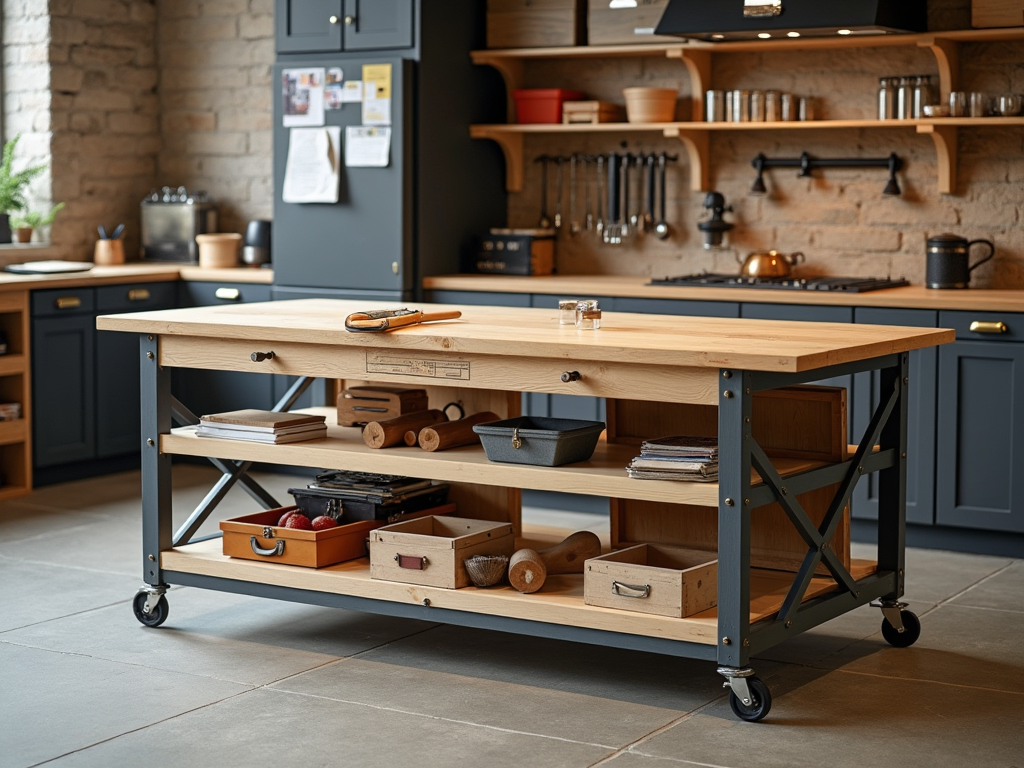Quick facts
Can't find the answer you're looking for? Please get in touch with our friendly team.
How deep are most workbenches?
Most workbenches are typically between 24 to 30 inches deep. This depth provides enough workspace for various tasks while allowing easy access to tools and materials. Some specialized workbenches may vary in depth based on their intended use.
Why do workbenches have holes?
Workbenches have holes to accommodate clamps and vises, allowing for secure holding of materials while working. These holes provide flexibility in positioning tools and workpieces, enhancing stability and precision during various tasks, such as woodworking or metalworking.
What is a good size for a wood workbench?
A good size for a wood workbench is typically around 24 to 36 inches deep and 48 to 72 inches wide. The height should be about 34 to 38 inches, allowing for comfortable use while standing. Adjust the dimensions based on your specific projects and available space.
What is the meaning of work bench?
A workbench is a sturdy table used for manual work, often found in workshops or garages. It provides a stable surface for tasks like woodworking, crafting, or repairs. Some workbenches also include storage options and tool organization features for added convenience.
What are the different styles of workbenches?
Different styles of workbenches include traditional wooden workbenches, metal workbenches for durability, folding workbenches for portability, and adjustable height workbenches for ergonomic use. Each style caters to specific needs, such as woodworking, crafting, or general DIY projects.
What are workbenches used for?
Workbenches are primarily used for various tasks such as woodworking, crafting, and repairs. They provide a sturdy surface for tools and materials, making it easier to complete projects. Some workbenches also include storage options for tools, enhancing organization and efficiency in workspaces.
Is it cheaper to build a workbench or buy one?
It can be cheaper to build a workbench, especially if you have leftover materials. However, buying one can save time and ensure quality. Compare costs of materials and tools versus ready-made options to determine the best value for your needs.
Category Overview
Introduction
Workbenches serve as indispensable tools in both home and workshop settings, providing a sturdy surface for various tasks. Whether you're a DIY enthusiast, a hobbyist, or simply need a functional space to organize your projects, a well-chosen workbench enhances your daily life by promoting efficiency and creativity. Not only does it support practical tasks like woodworking or repairs, but it also offers an element of decor enhancement, often becoming a focal point in any workspace.
Functionality
The primary function of workbenches is to provide a robust platform for various activities such as crafting, woodworking, or assembling projects. They can be utilized in diverse environments—be it your garage, basement workshop, or home office. Some models offer additional features like integrated storage solutions for tools and supplies or foldable designs that save space when not in use. A good workbench adapts to your needs, whether you require heavy-duty construction for industrial tasks or something more compact for light hobbies.
Design & Style
Workbenches come in an array of styles and materials tailored to fit different tastes and spaces. Common materials include solid wood for traditional aesthetics and metal frames for modern industrial vibes. You can find variations ranging from rustic farmhouse designs to sleek minimalist options that seamlessly integrate into contemporary decor themes. Personalization is key—many workbenches allow you to add features like adjustable heights or custom finishes that align with your existing decor, ensuring they meet both functional and aesthetic needs.
Practical Considerations
When selecting the right workbench for your home, several factors should guide your decision-making process: Room Size: Ensure there’s enough space around the workbench for movement. Material Durability: Choose materials that can withstand the type of work you'll be doing. Usage Needs: Determine if you need heavy-duty performance or something more decorative. Design Preferences: Match the style with your home's overall look. Common mistakes include underestimating size requirements or overlooking necessary storage options; maximizing functionality hinges on thoughtful consideration of these elements.
Comparison and Alternatives
When comparing workbench materials like wood versus metal: Wooden Workbenches offer warmth and aesthetic appeal but may require more maintenance. Metal Workbenches are durable and resistant to stains but can be less visually appealing if aesthetics are a priority. Think about shapes too—rectangular designs typically provide more workspace while round versions encourage collaboration in shared areas like garages or workshops.
Trends and Popular Items
Current trends reflect a growing interest in multifunctional spaces where practicality meets style. Mid-century modern-inspired designs are gaining popularity due to their clean lines combined with effective functionality. Customers are particularly gravitating toward wooden workbenches finished with eco-friendly paints that align with sustainable living practices. Trending features include built-in power outlets to keep tools powered up without cluttering your workspace with cords. Embrace the possibilities—a well-chosen workbench is not just a surface; it's an investment in functionality and creativity that transforms how you engage with your hobbies at home!


